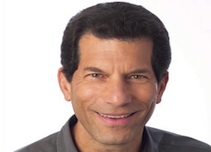Introduction
Following HP’s CEO Mark Hurd’s resignation today, one interesting scenario to consider is whether the Board might appoint former Palm CEO Jon Rubinsteinto lead the company. While this idea may seem distant at first glance, there are compelling reasons why HP could benefit from bringing in Rubinstein to steer its future.
HP’s Vision for the Future
HP has always aimed to be a leader in the mobile space, much like its competitor Apple. However, its current strategy seems to be centered around webOS, a platform that was once considered a game-changer but hasn’t quite lived up to expectations. If Rubinstein were to take over, HP might finally have the chance to reinvigorate its efforts with a more aggressive approach.
Jon Rubinstein’s Background
Jon Rubinstein has a long history in the tech industry, particularly at Apple, where he served as a key executive before leaving to lead Palm from 2006 until his departure in 2010 when Hurd took over. During his time at Apple, Rubinstein played a significant role in developing the iPod and iPhone lines, which were among the most successful products in history (prior to the iPad). His expertise in mobile devices could be invaluable for HP’s next phase of growth.
The Chances of Rubinstein’s Success
While Rubinstein has experience with mobile hardware, it’s worth noting that he wasn’t entirely successful when he led Palm. The webOS platform, while innovative, faced competition from Android and eventually Windows Phone, which HP had already invested in through its acquisition of Microsoft. Given this, some industry observers wonder if Rubinstein would be able to replicate his past achievements at HP.
Why HP Needs Jon Rubinstein
One of the key reasons why HP might want to bring Rubinstein on board is his deep understanding of mobile technology and the potential for webOS to become a major player in the market. With the increasing shift toward smartphones, a robust mobile ecosystem could be critical for HP’s long-term success.
Competitor Analysis
Apple remains the clear leader in the mobile space, but HP has never fully matched its performance or innovation. By retooling its strategy under Rubinstein, HP might finally have the opportunity to compete on equal footing with its rival. Additionally, Google’s growing influence in mobile hardware and software could provide HP with another challenge to overcome.
The Role of Jon Rubinstein
If appointed as CEO, Jon Rubinstein would likely focus on three main areas:
- Product Development: Leveraging webOS to create cutting-edge smartphones and tablets that meet the needs of today’s consumers while maintaining compatibility with existing hardware.
- Strategic Alliances: Partnering with key technology providers to ensure HP remains a dominant player in the mobile ecosystem.
- Market Expansion: Expanding HP’s presence globally, particularly in emerging markets where smartphone adoption rates are rising rapidly.
Risks and Challenges
Of course, there are risks associated with bringing Rubinstein on board. His tenure at Palm was marked by challenges, including financial difficulties and a focus on hardware rather than software development. Additionally, HP must navigate the complex competitive landscape without losing sight of its core mission: delivering high-quality computing solutions to consumers and businesses alike.
Conclusion
While HP’s decision to bring Jon Rubinstein back onto the board is not guaranteed, his expertise could provide much-needed direction for the company. With a well-structured strategy that aligns with its vision for the future, HP might finally achieve the growth it onceAspired to under Mark Hurd’s leadership.
Profile of M.G. Siegler
M.G. Siegler is the current General Partner at Battery One Capital, a venture capital firm that has invested in numerous tech startups across various industries. Prior to his role at Battery One, Siegler served as Chief Technology Officer (CTO) at Red Hat, where he played a key role in shaping the company’s technology strategy and overseeing its growth through acquisitions and partnerships.
Background and Expertise
M.G. Siegler has over two decades of experience in the tech industry, with a focus on leadership roles in startups as well as large-scale enterprises. His expertise spans across multiple sectors, including cloud computing, artificial intelligence, and mobile technology. Siegler is particularly known for his ability to identify innovative technologies and leverage them for business growth.
Investment Strategy
As an investment partner at Battery One Capital, M.G. Siegler has a track record of identifying promising startups that align with emerging trends in the tech industry. His strategy focuses on companies that have the potential to disrupt traditional markets or create new opportunities through innovative solutions.
1. Bluesign App Wins $500K Grant from NIST
The Bluesign app, designed to help people maintain social distancing norms during the pandemic, has secured a $500k grant from the National Institute of Standards and Technology (NIST). This recognition underscores the app’s potential as a critical tool in combating the spread of COVID-19.
2. TikTok Users Try Migrating to Chinese App RedNote
TikTok users are reporting mixed success when attempting to migrate their accounts to RedNote, China’s counterpart to TikTok. Many have encountered issues with content moderation or user engagement that differ significantly from the original platform.
3. OpenAI’s AI Reasoning Model ‘Thinks’ in Chinese Sometimes
OpenAI’s new AI reasoning model has been observed to generate text in Chinese at times, raising questions about its bias and reliability. This development could have significant implications for the ethical use of AI in different cultural contexts.

